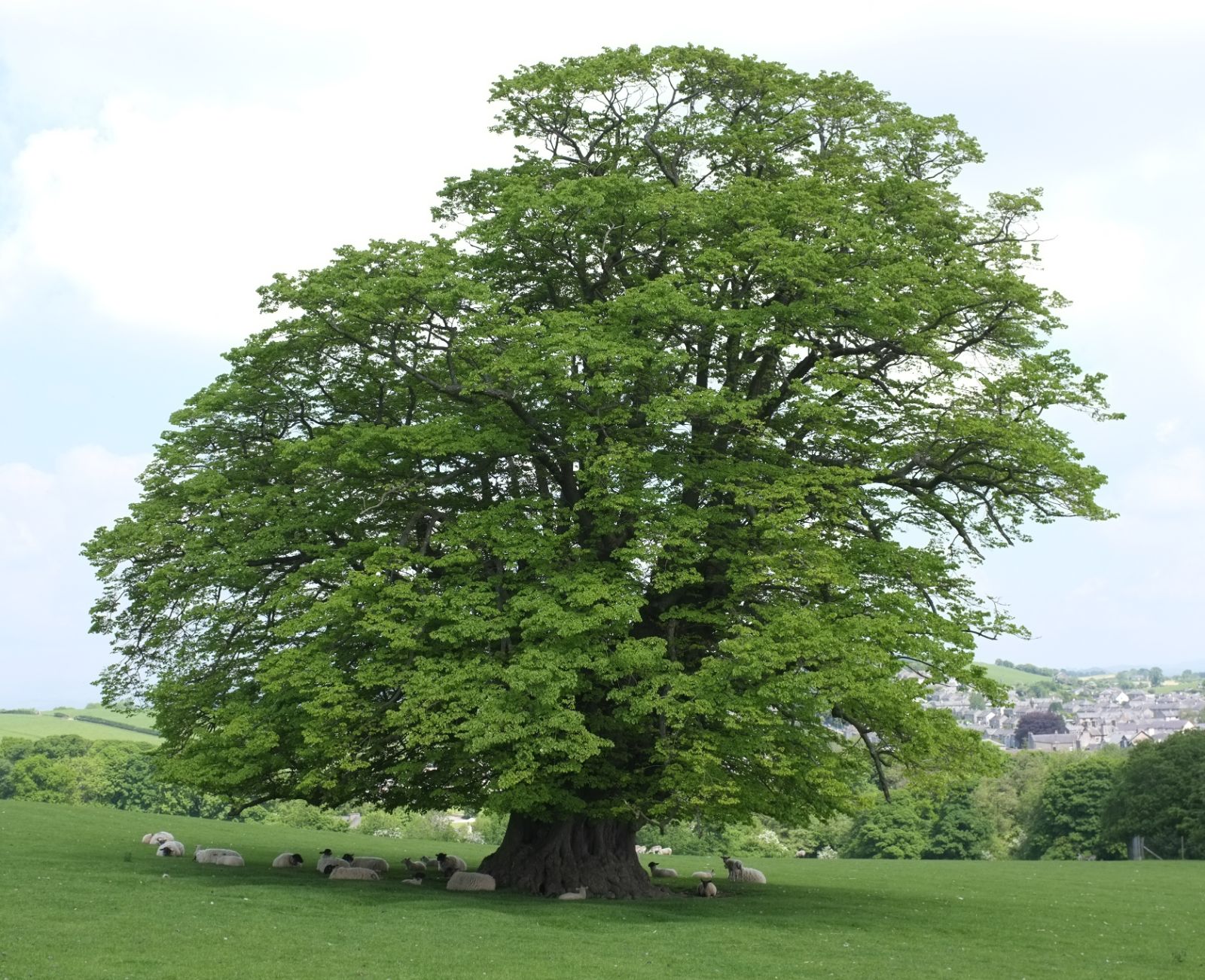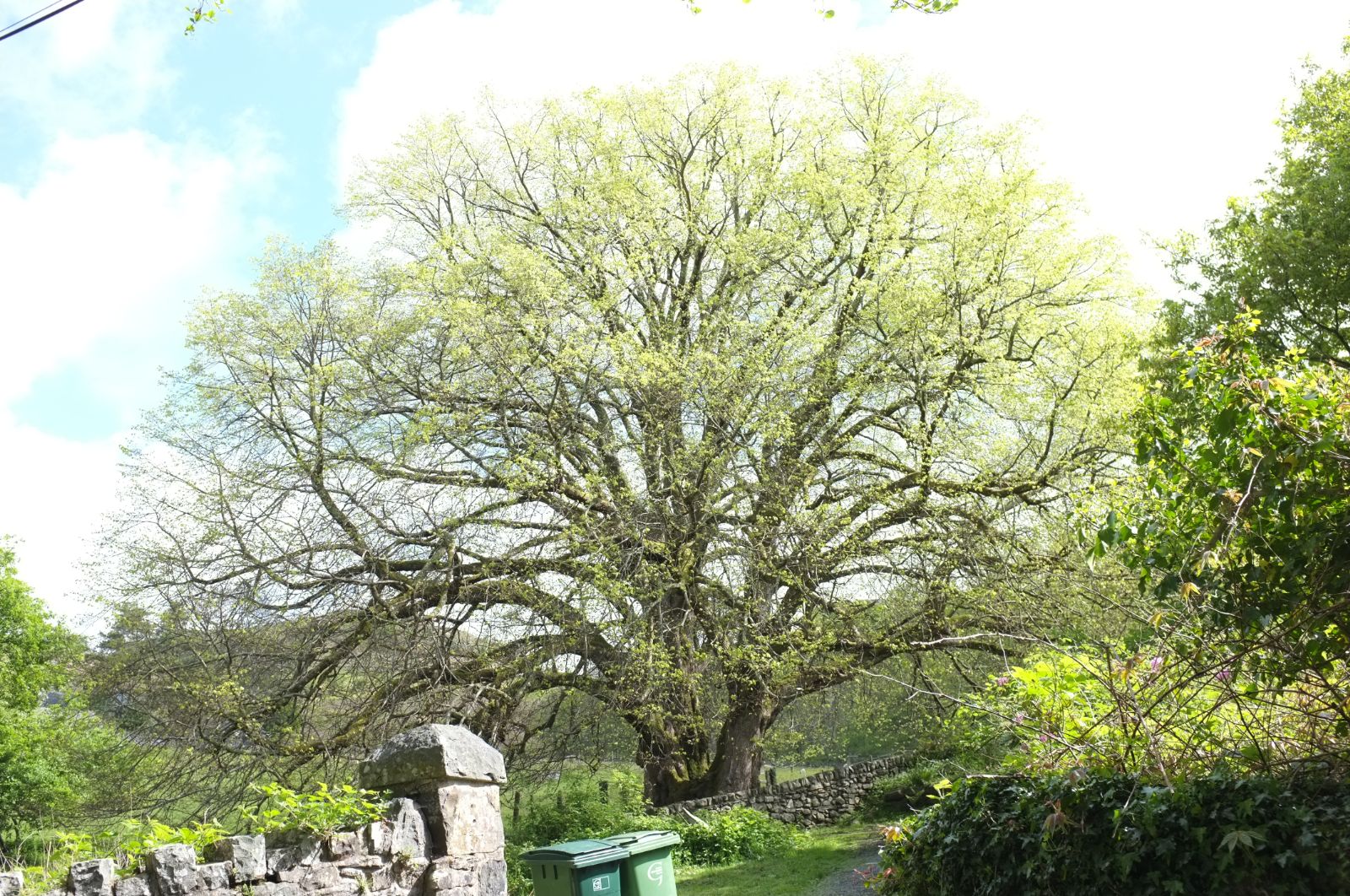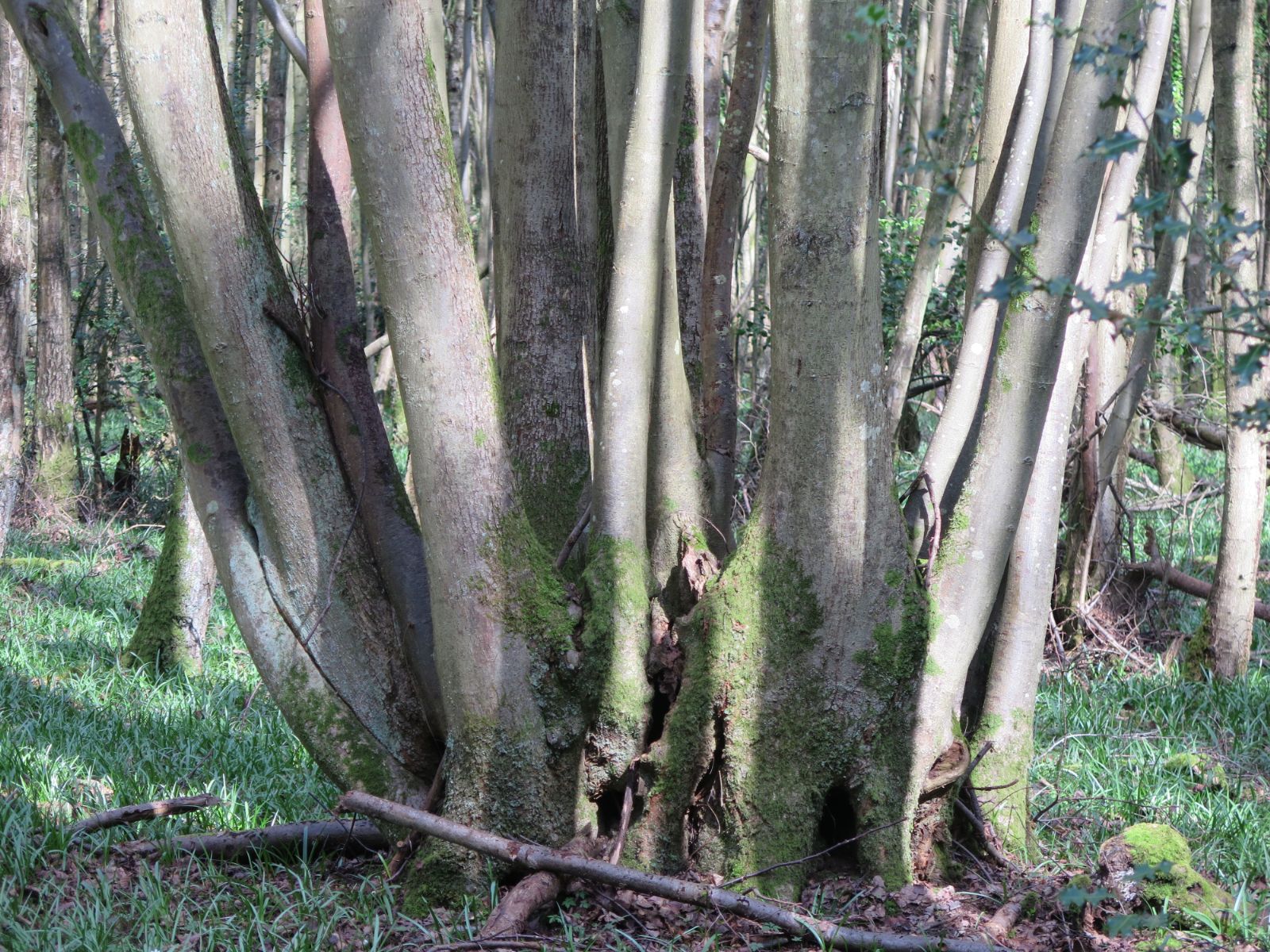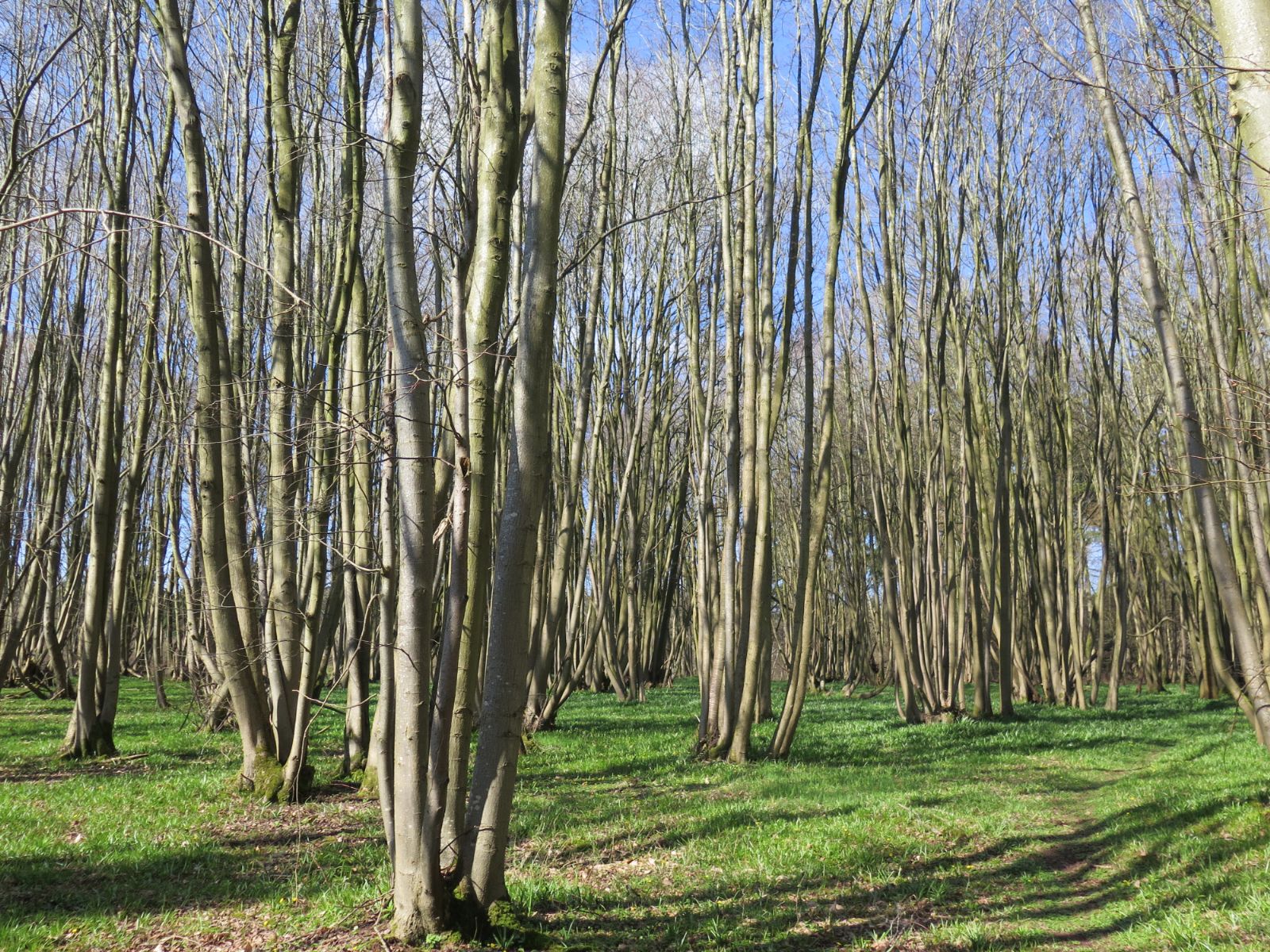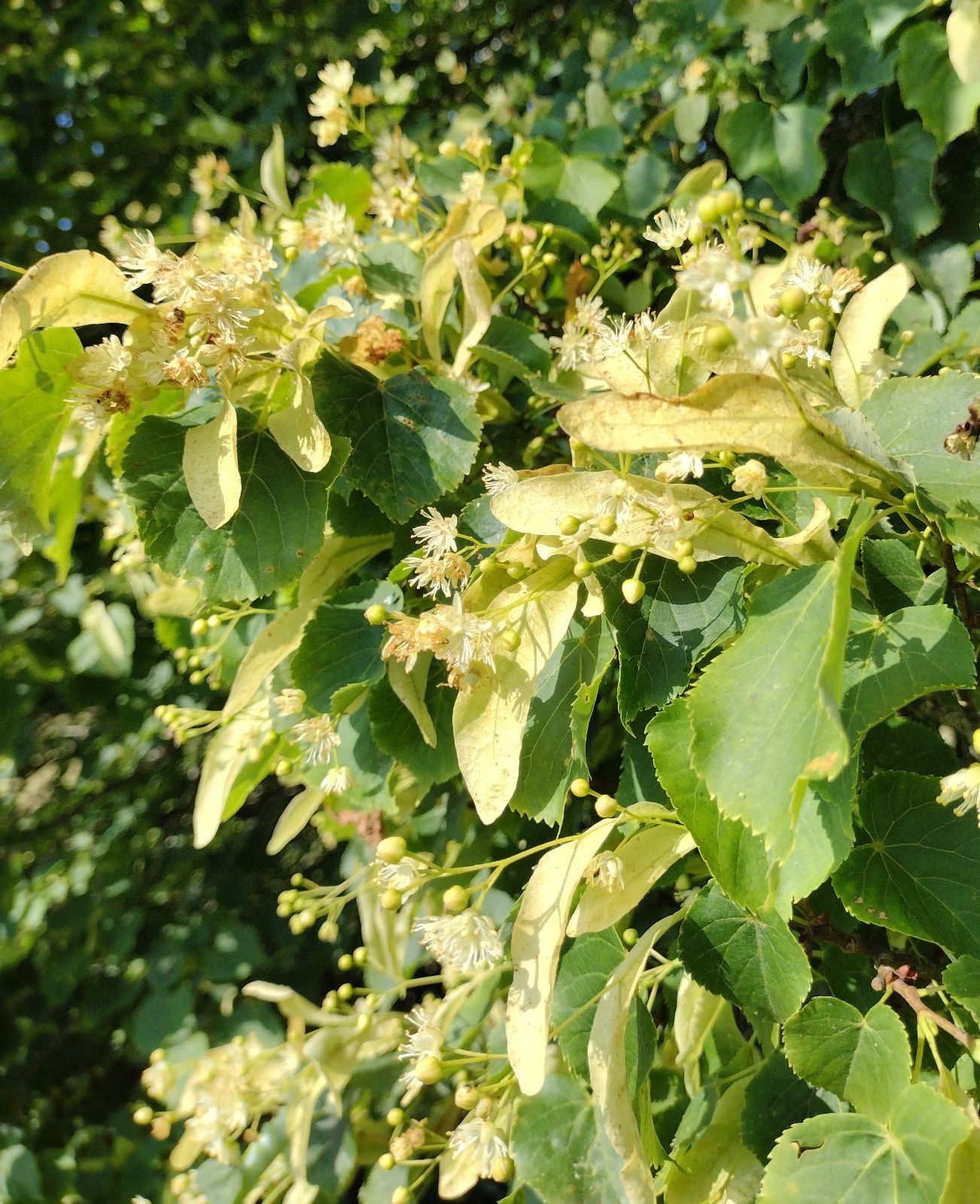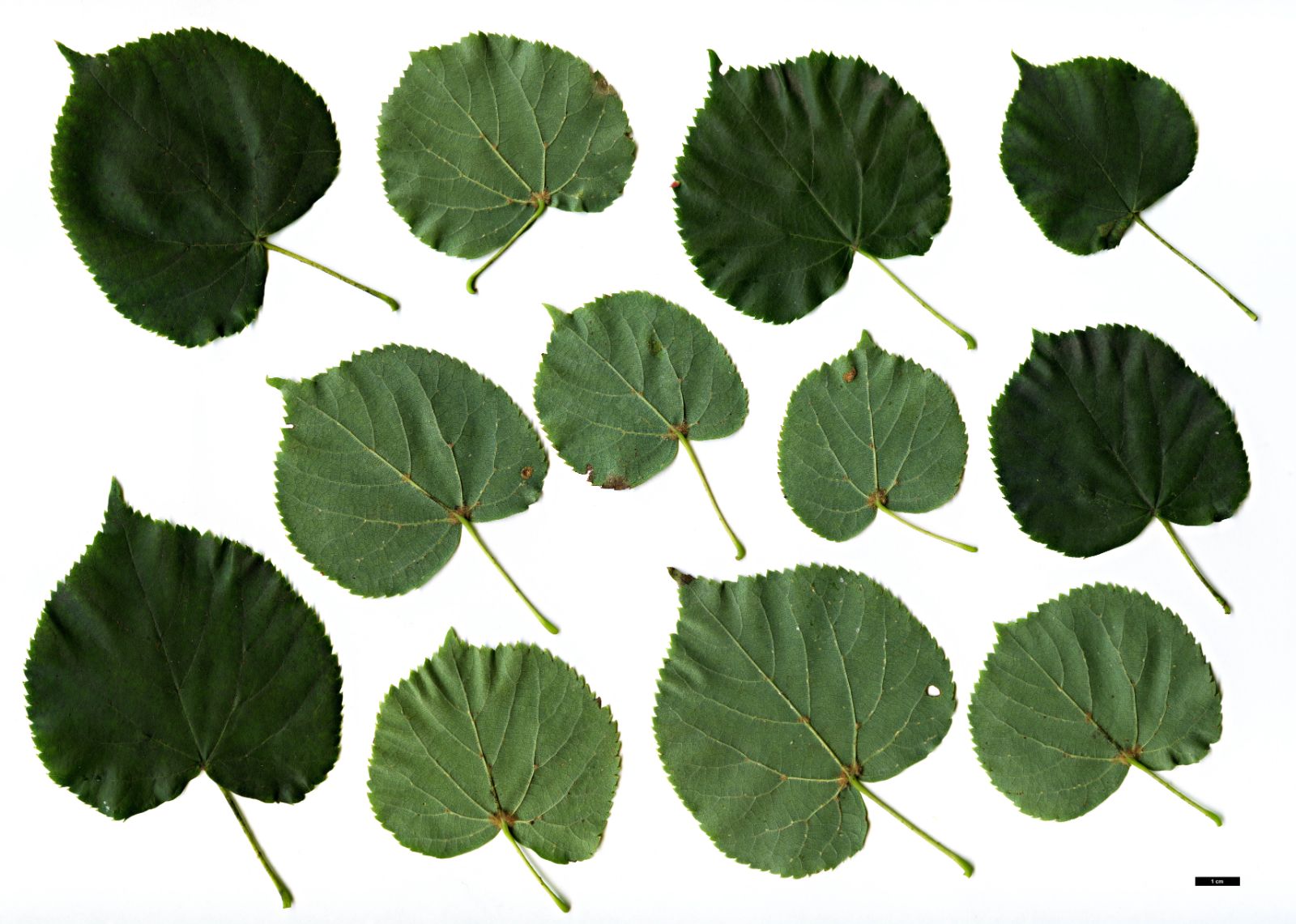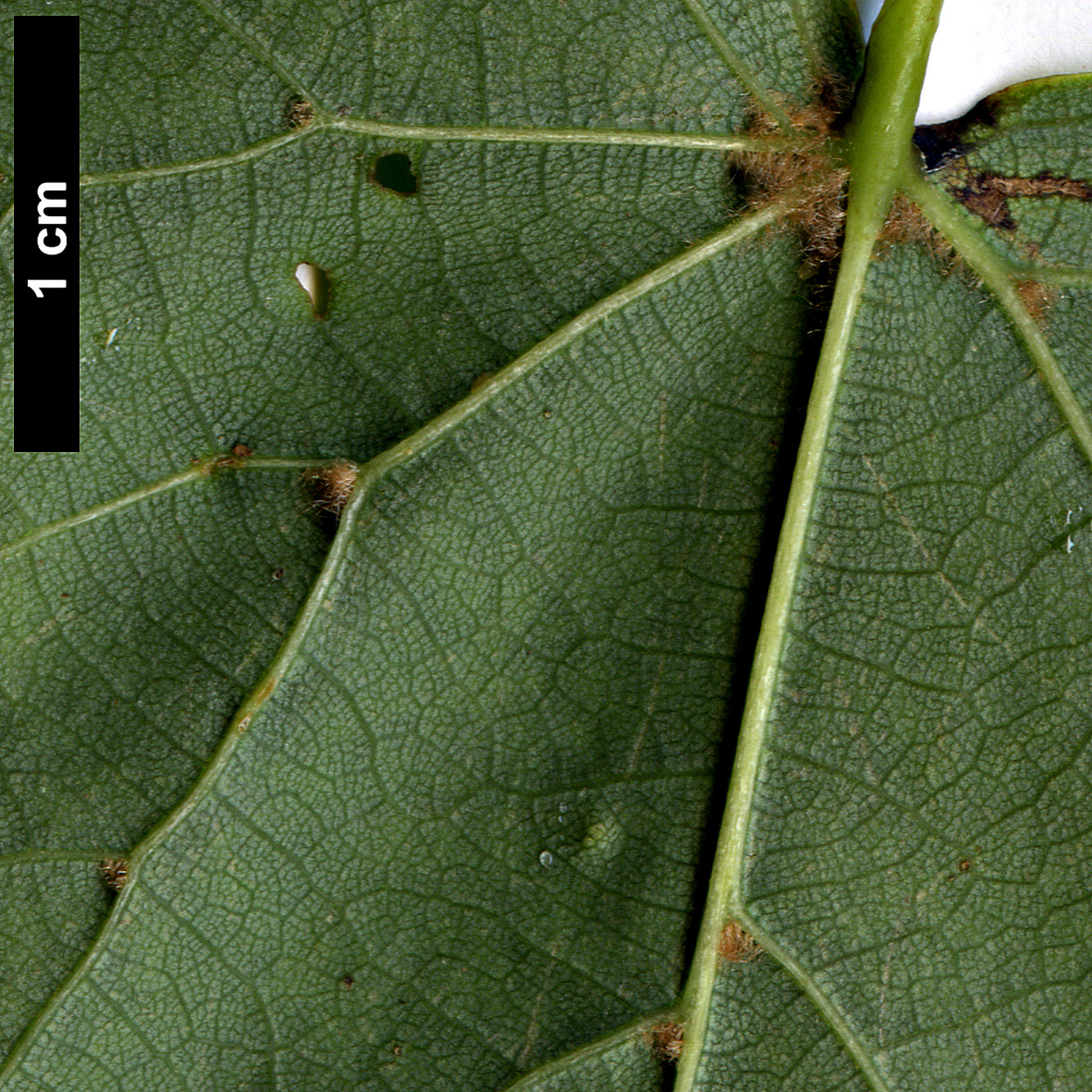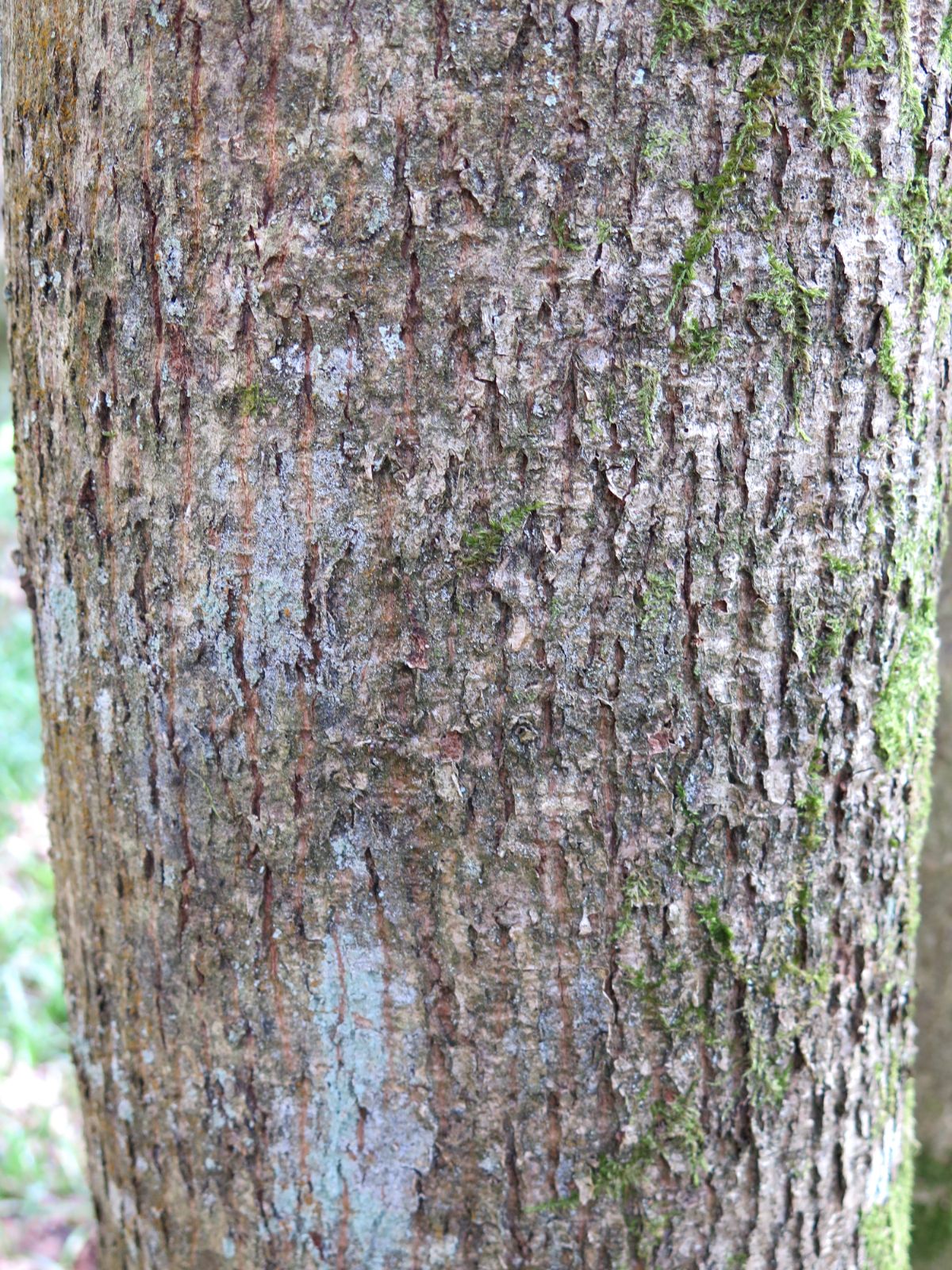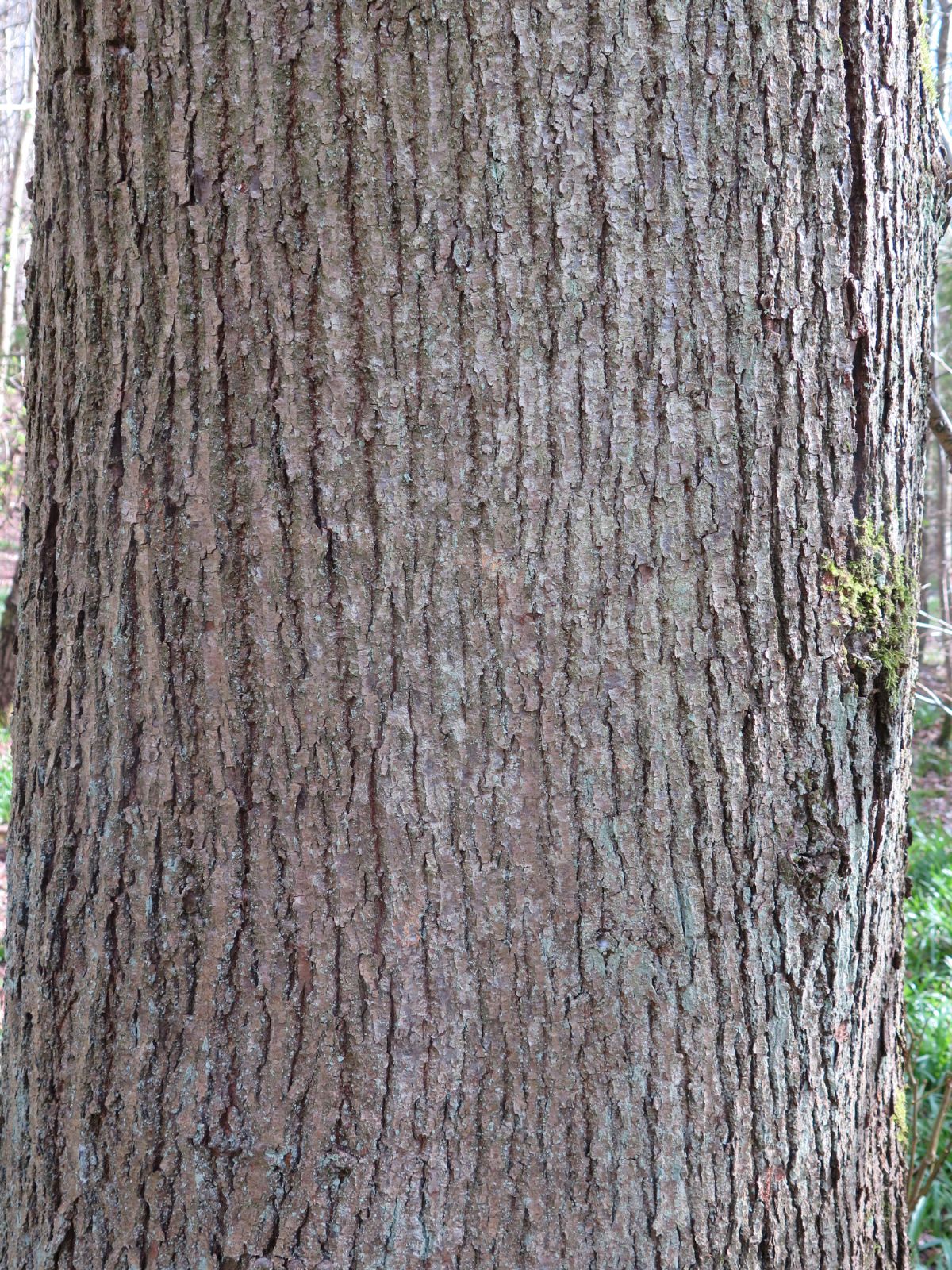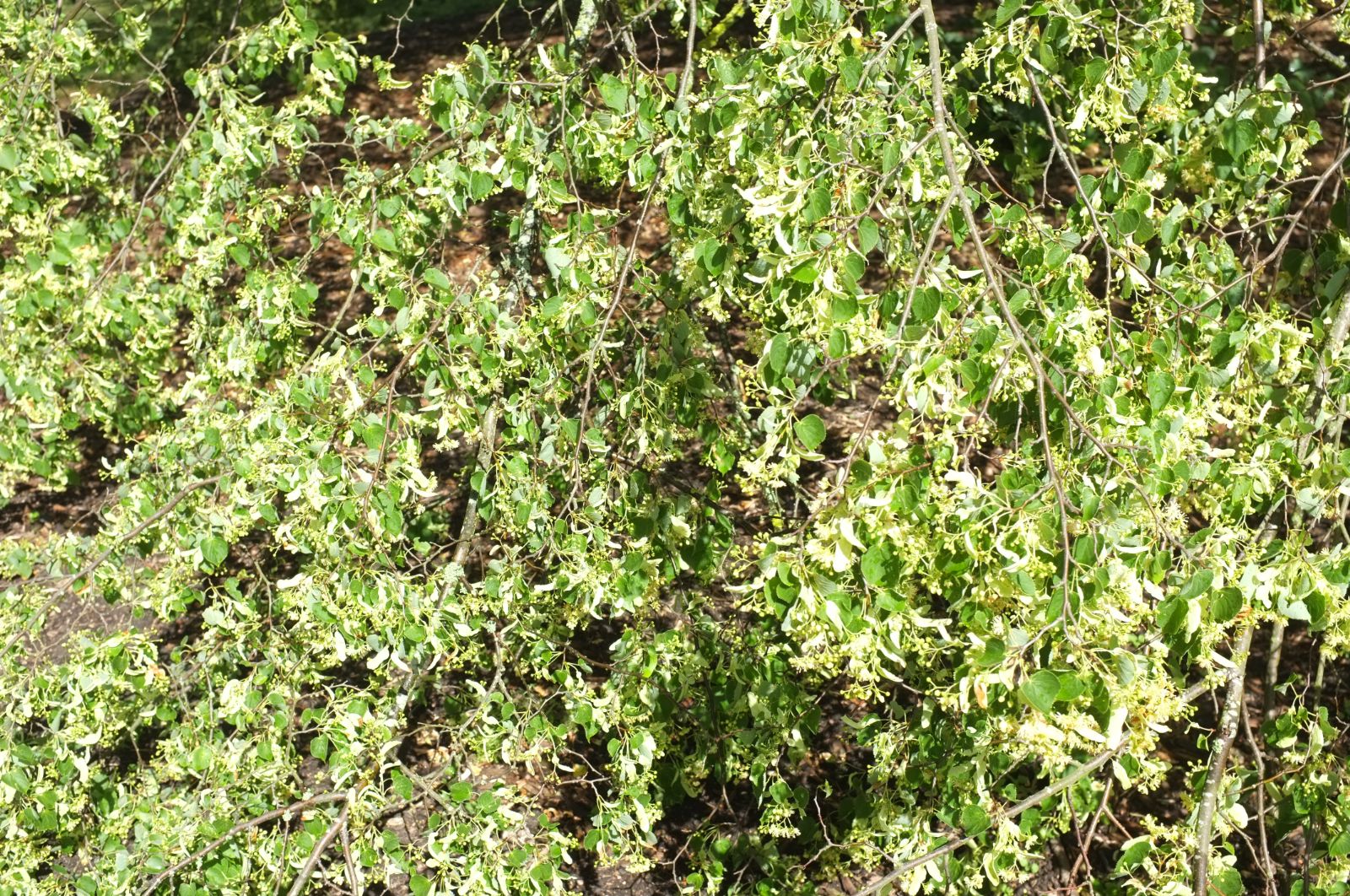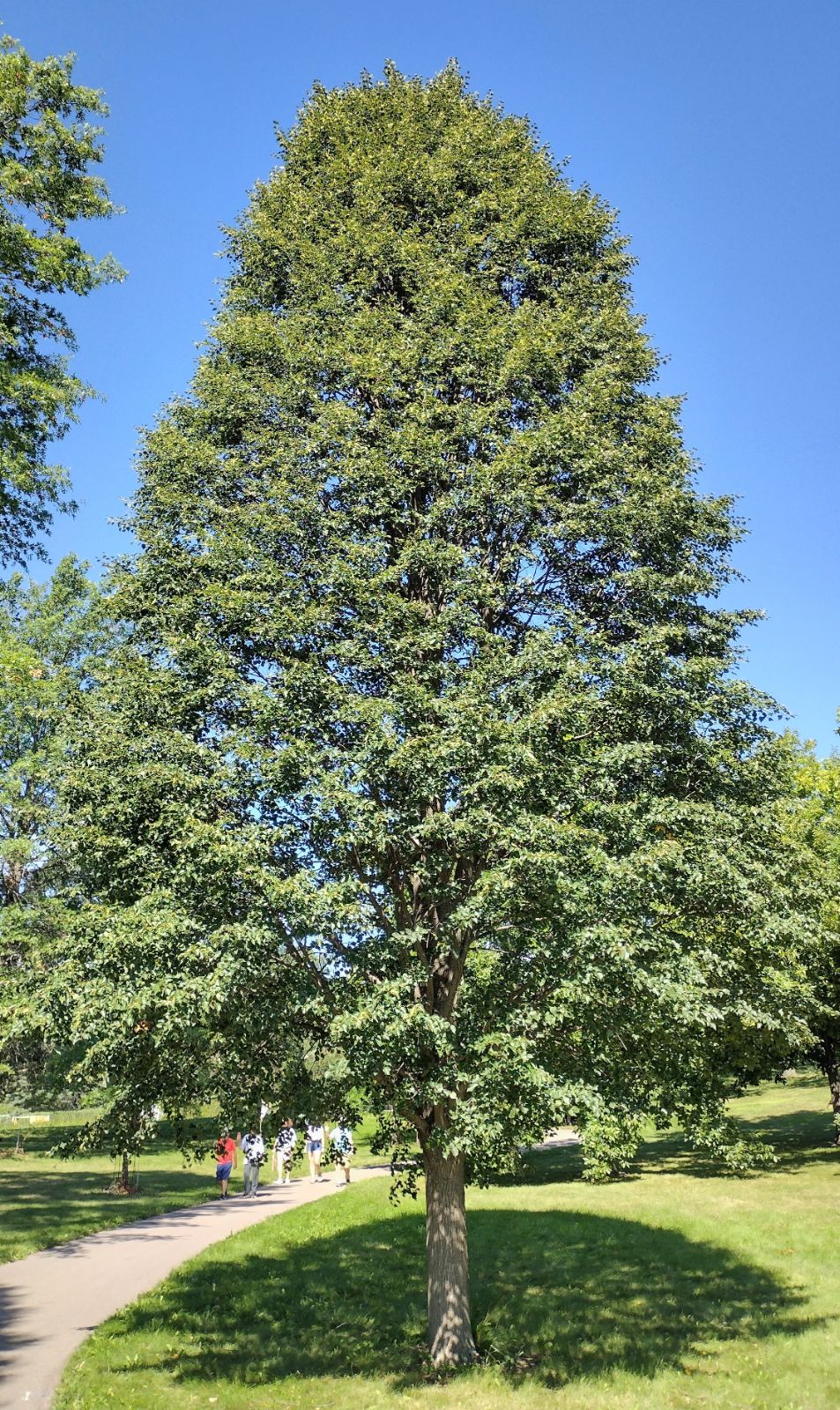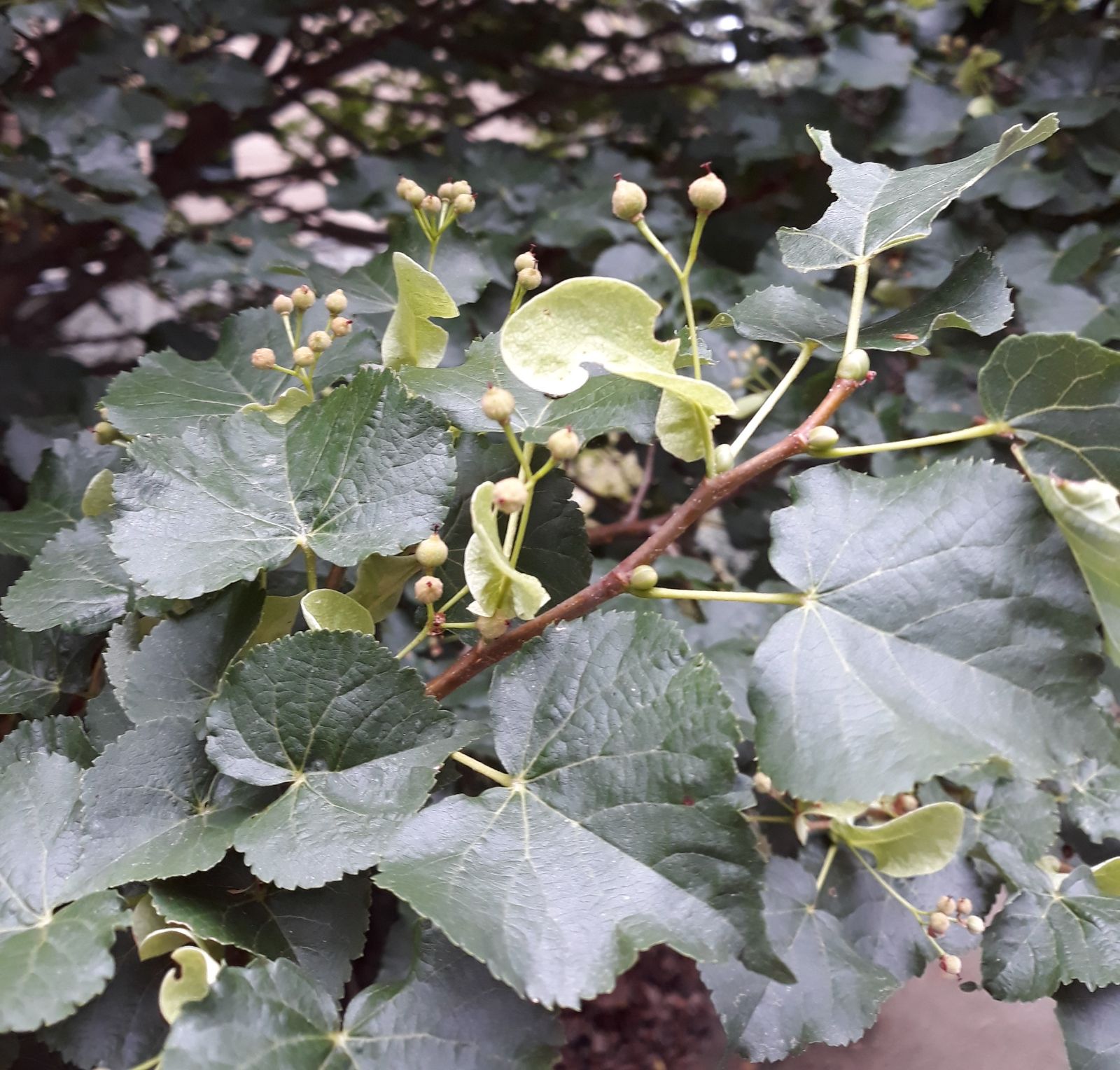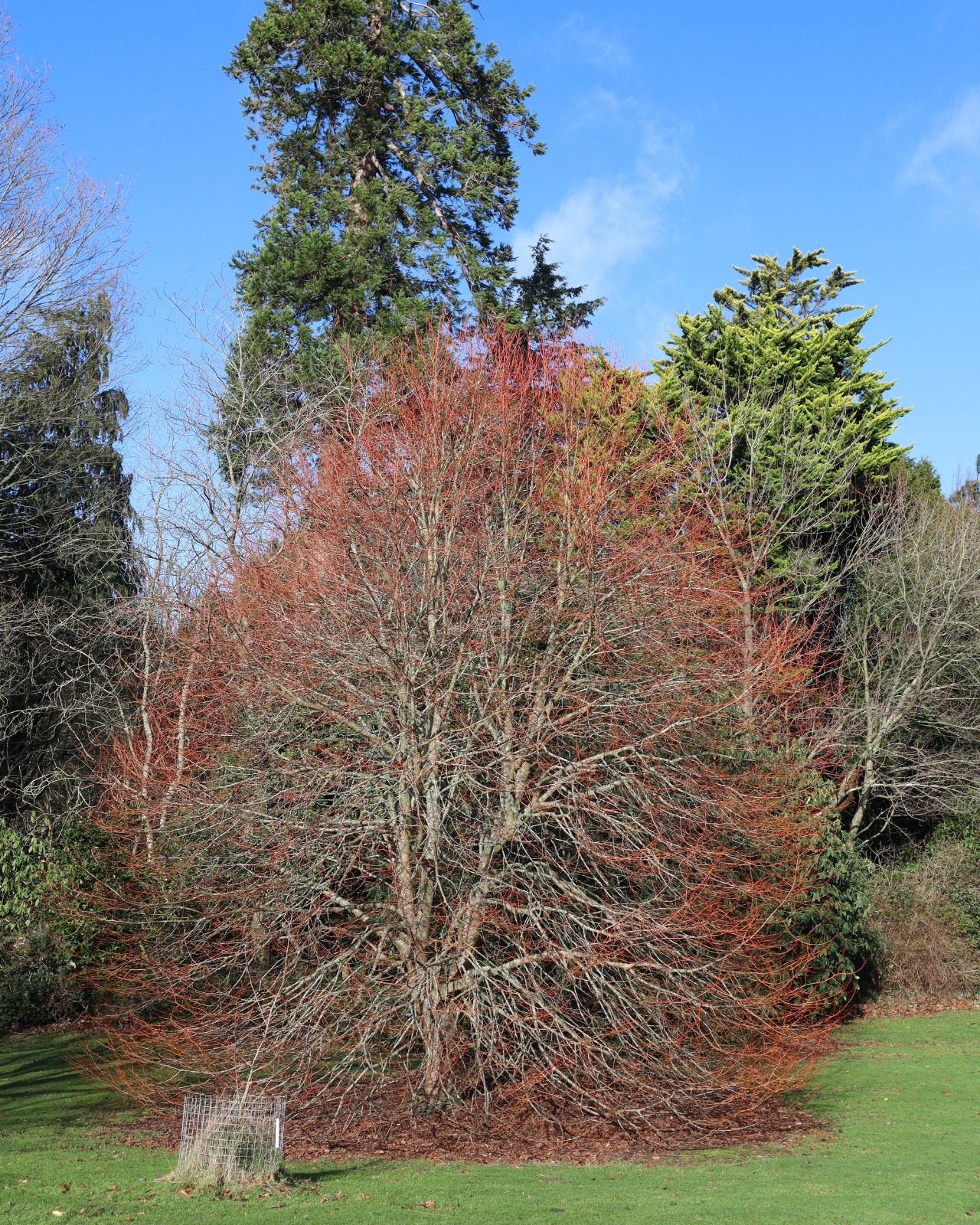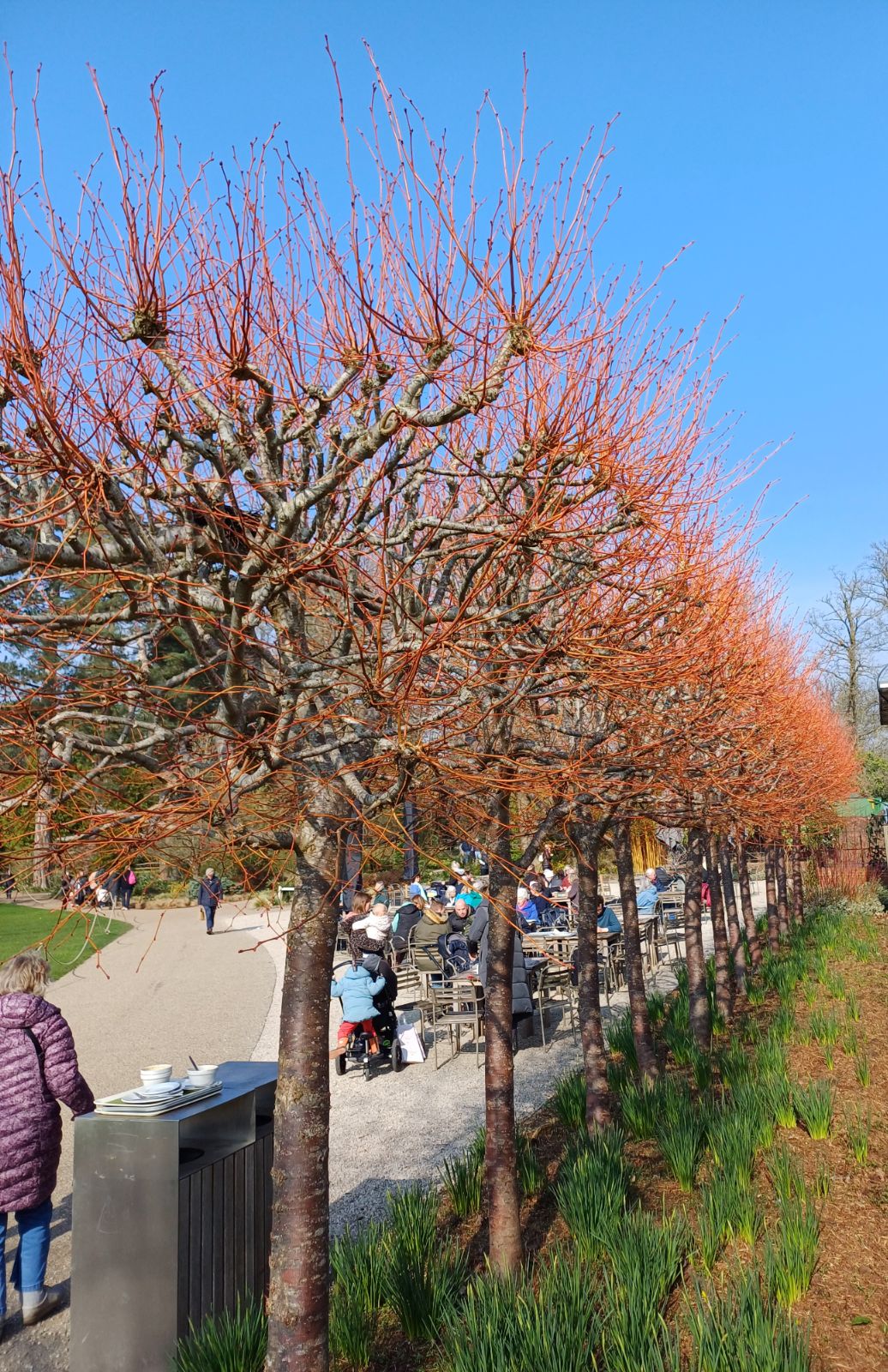Tilia cordata
Sponsor
Kindly sponsored by
a member of the International Dendrology Society
Credits
Owen Johnson & Julian Sutton (2020)
Recommended citation
Johnson, O. & Sutton, J. (2020), 'Tilia cordata' from the website Trees and Shrubs Online (treesandshrubsonline.
Genus
Common Names
- Small-leaved Lime
- Littleleaf Linden
- Pry
Synonyms
- Tilia parvifolia Ehrh.
- Tilia microphylla Vent.
- Tilia ulmifolia Scop.
Infraspecifics
- 'Bailey'
- 'Böhlje'
- 'Chancole'
- 'Corzam'
- 'Dombrie'
- 'Elin'
- 'Fairview'
- 'Girard's Dwarf'
- 'Golden Cascade'
- 'Green Globe'
- 'Greenspire'
- 'Halka'
- 'June Bride'
- 'Komsta'
- 'Len Parvin'
- 'Lico'
- 'Lima'
- 'Lorberg'
- 'Low Window'
- 'Marler Globe'
- 'Merkur'
- 'Monto'
- 'Morden'
- 'Nový Jičín'
- 'Olympic'
- 'Opava'
- 'Plymtree Gold'
- 'Purpurea'
- 'Rancho'
- 'Roelvo'
- 'Ronald'
- 'Savaria'
- 'Shibamichi Gold'
- 'Skjold'
- 'Streetwise'
- subsp. sibirica
- 'Swedish Upright'
- 'Unizam'
- 'Van Pelt'
- var. betulifolia
- var. major
- 'Villae Aurea'
- 'Winter Orange'
- 'Żory'
Other taxa in genus
- Tilia americana
- Tilia amurensis
- Tilia callidonta
- Tilia chinensis
- Tilia chingiana
- Tilia concinna
- Tilia dasystyla
- Tilia endochrysea
- Tilia × euchlora
- Tilia × europaea
- Tilia × flaccida
- Tilia × flavescens
- Tilia Hanwell Hybrids
- Tilia 'Harold Hillier'
- Tilia 'Harvest Gold'
- Tilia × haynaldiana
- Tilia henryana
- Tilia japonica
- Tilia × juranyana
- Tilia kiusiana
- Tilia mandshurica
- Tilia maximowicziana
- Tilia miqueliana
- Tilia mongolica
- Tilia nobilis
- Tilia × noziricola
- Tilia oliveri
- Tilia paucicostata
- Tilia platyphyllos
- Tilia tomentosa
- Tilia tuan
- Tilia 'Westonbirt Dainty'
Tree to 40 m, dbh 4 m. Trunk sometimes with epicormic sprouts; bark grey-brown, with irregular lumpy ridges forming from about 30 years of age. Twigs slender (1.3–3.5 mm thick), shining red at least in sun; sparse stellate hairs are soon shed. Buds reddish, with 2 scales glabrous except at their margins, one much larger than the other. Leaves 3.5–7 × 3.5–7 cm, suborbicular and asymmetrically cordate at the base, plane; marginal teeth imperfectly regular and often without mucronate tips. Underleaf smooth and usually glaucous-green, with some stellate hairs soon shed; quite large patches of rust-coloured hair persist under the major vein axils. Floral bracts 4–9 × 0.8–1.7 cm, glabrous; stalk 0.6–2.4 cm long. Inflorescence erect and held above the foliage, usually with 5–8 flowers but occasionally with up to 30. Staminodes absent. Fruit small, 6–7 × 4 mm, with a dense cover of brown hairs; fruit-wall not ribbed, fragile (Pigott 2012).
Distribution Armenia Austria Azerbaijan Belarus Belgium Bosnia and Herzegovina Bulgaria Croatia Czechia Denmark Estonia Finland south France Georgia Germany Greece Hungary Italy Latvia Lithuania Luxembourg North Macedonia Moldova Montenegro Netherlands Norway to 65° N on the coast Poland Romania Russia east to western Siberia Serbia Slovakia Slovenia Spain mountains in the north and east Sweden south Switzerland Turkey West of Istanbul Ukraine including south-eastern Crimea United Kingdom England and Wales
Habitat Forests
USDA Hardiness Zone 3-7
RHS Hardiness Rating H7
Conservation status Least concern (LC)
This is the most widespread and common lime of Europe and western Asia, a tree of the temperate lowlands placed in Section Anastraea. Miller’s specific epithet dates from 1768 and refers to the usually cordate leaf bases; earlier authors including Linnaeus failed to make distinctions between the two western European species and their hybrid (Pigott 2012). With its small, almost birch-like leaves, attractively pale underneath, and its showy erect flowerheads – a featured shared within the genus only by T. mongolica – it is strikingly attractive. The crown is often domed in age, and the trunk (massive in old trees, reaching 1.5–3 m dbh at 400–700 years – Pigott 2012) is less frequently lost under a mass of epicormic shoots than that of Common Lime.
Pollen analysis suggests that 6000 years ago T. cordata was the most abundant tree in the ‘wildwood’ of much of lowland Britain and further afield in western Europe (Rackham 1986). A very great decline in lime pollen deposits between 5000 and 2000 years ago may be in part an artefact of changing depositional environments, but nevertheless reflects a dramatic decline in the species’ abundance. This is thought to be primarily the result of human activity (Grant et al. 2011). In Britain, Small-leaved Lime is now rather scarce and local as a wild tree and is at its climatic limit in the Lake District and Co. Durham; lime-dominated woods which survived the ‘lime decline’ are unambiguously rare (for example, Richer 2017). Few or no seeds are set in the cool summers of western Europe (Pigott 2012); at least in Britain it appears to persist only through regrowth from coppice stumps and clonal spread.
Many huge and ancient ‘village limes’ in continental Europe belong to this species, including le tilleul de Grange Sauvaget, Jura, France (419 cm dbh in 2017 – monumentaltrees.com 2018). Until the last few decades, it was seldom planted in Britain, occasional trees appearing apparently by accident within avenues and other landscape plantings of Common Lime (Tilia × europaea), the species’ natural hybrid with Broad-leaved Lime (T. platyphyllos). The largest of several old T. cordata in Parnham Park, Dorset (277 cm dbh in 2007) was dated by core-sampling to around 1540, and the tallest known example, at Lydney Park, Gloucestershire was 40.2 m tall in 2014 (Tree Register 2018). It has recently become more popular in the United Kingdom, in both ‘native’ plantings and urban settings.
In North America it has been widely planted in our area, and certainly long enough for Jacobson (1996) to record a 29 m specimen in Washington State. An enthusiast for this species and limes in general, Dirr (2009) promotes it as a shade tree for ‘about any place a real quality tree is desired’! Often no more than yellowish, Dirr (2009) mentions an instance of excellent, clear yellow autumn colour in New Hampshire.
A very large number of cultivars has been named: Jablonski & Plietzsch (2013) provide a near-comprehensive checklist in German. Those more likely to be encountered in our area, as either established trees or in the trade, are described below. In addition, we list them along with other more obscure cultivars (marked with an asterisk), in two broad size categories.
The following cultivars make more or less full-sized trees. Many have been selected for narrow crowns or general good form in youth, although this may not persist in maturity. Even so, the uniformity resulting from planting a single clone is seen as a virtue in avenues and street plantings; even a cultivar which is near-impossible to describe in a way which distinguishes it from any other has value in this context. ‘Bailey’, ‘Bicentennial’*, ‘Bohlje’, ‘Chancole’, ‘Corzam’, ‘Cordaley’*,’Debrecen’*, ‘De Groot’*, ‘Dila’*, ‘Dombrie’, ‘Euclid’*, ‘Fairview’, ‘Greenspire’, ‘Haaren’*, ‘Hoogeind Select’*, ‘June Bride’, ‘Len Parvin’, ‘Lima’, ‘Linn’, ‘Lorberg’, ‘Low Window’, ‘Merkur’, ‘Mieke’*, ‘Morden’, ‘Nebuzely’*, ‘Norbert’*, ‘Norlin’, ‘Olympic’, ‘Ovalifolium’*, ‘Rancho’, ‘Roelvo’, ‘Salem’*, ‘Savaria’, ‘Skjold’, ‘Streetwise’, ‘Swedish Upright’, ‘Turesi’*, ‘Van Pelt’.
The following cultivars are distinctly smaller and/or slower growing than is normal, ranging from small trees with dense crowns to compact shrubs, some derived from witches’ brooms. It might seem useful to distinguish shrubs from small trees, but the widespread practice of top grafting bushy cultivars to give small-crowned trees blurs the distinction in practice. ‘Compacta’*, ‘Evangelik’*, ‘Green Globe’, ‘Halka’, ‘Komsta’, ‘Lico’, ‘Niko’*, ‘Nový Jičín’, ‘Marler’, ‘Marta’*, ‘Monto’, ‘Peve Kronenberg’*, ‘Semele’*, ‘Simone’*, ‘Unizam’, ‘Girard’s Dwarf’, ‘Theo Westerveld’*, ‘Umbrella’*, ‘Żory’.
There are a few ‘golden leaved’ varieties, the leaves yellow or yellow-green in spring: ‘Bieruń’*, ‘Oldenbelt’*, ‘Plymtree Gold’, ‘Shibamichi Gold’, ‘Villae Aurea’.
Variegated selections have been named over the years, but there is a pattern of brief, limited distribution, a fall into obscurity and apparent extinction. We choose simply to list names, with type of variegation and origin. ‘Argenteo-Variegata’ (type unknown, before 1903), ‘Aureo-Variegata’ (yellow margin; Germany, 19th century), ‘Bad Driburg’ (irregular whitish-yellow stripes; Germany, 1998), ‘Chimera’ (irregular whitish-yellow stripes; Poland, 21st century), ‘Sublunata Variegata’ (type and origin unknown, a (now defunct) tree at Kew Gardens was 15 m tall 1967 – Tree Register 2018), ‘Debra’s Delight’ (leaves splashed and speckled yellow, cream, white and green; Handy Nursery, Oregon, by 2016), ‘Gold Heart’, (broad, irregular central yellow zone; Buchholz & Buchholz, Oregon, before 2010), ‘Mixed Emotions’ (irregular creamy variegation; van der Wurff nursery, Netherlands, 1988, marketed 2003); (Jablonski & Plietzsch 2013; Hatch et al. 2017; Buchholz & Buchholz Nursery 2020).
'Bailey'
Synonyms / alternative names
Shamrock®
'Baileyi'
A clone widely marketed in North America as a shade tree, with a broadly conical crown. It is sometimes compared to ‘Greenspire’, but has a broader, more open crown. Introduced 1990 or before by Bailey Nurseries, St Paul, Minnesota (Jablonski & Plietzsch 2013).
'Böhlje'
Synonyms / alternative names
'Erecta'
'Select'
An old German clone, upright with a conical crown, which broadens with age. Claimed as particularly wind-resistant and tolerant of coastal exposure, it is still marketed for urban plantings (van den Berk Nurseries 2020). It appears to have originated at the Böhlje nursery, Westerstede, Germany in the late 19th century (Santamour & McArdle 1985; Jablonski & Plietzsch 2013; van den Berk Nurseries 2020).
'Chancole'
Synonyms / alternative names
Chancellor®
Narrow-crowned in the early years, and resistant to wind damge, becoming pyramidal with age. Named by the Cole Nursery Co., Ohio in 1965, and protected by US Plant Patent 2712. It is still marketed in North America as a street tree. (Santamour & McArdle 1985; Dirr 2009; Schmidt 2020).
'Corzam'
Synonyms / alternative names
Corinthian®
Narrow crowned, especially in younger specimens, with relatively small leaves. Introduced by Lake County Nursery, Ohio by 1996 and marketed in both North America and Europe as a wind-resistant street tree (Jablonski & Plietzsch 2013; van den Berk Nurseries 2020). ‘Excellent habit as young tree,’ comments Dirr (2009).
'Dombrie'
Vigorous, upright clone with a pyramidal crown sometimes claimed to be narrow. Introduced by the Drappier nursery, France by 2010 (Jablonski & Plietzsch 2013; van den Berk Nurseries 2020).
'Elin'
Synonyms / alternative names
Linn®
Narrowly pyramidal to ovoid crown. Marketed in Scandinavia as a tree for smaller spaces. Swedish origin, a protected cultivar in Europe (Löta Trädskolor 2020).
'Fairview'
A commercial clone from North America, selected for strong growth habit, with rather large, thick, darker than usual leaves. Selected from T. cordata seedlings in 1969 by John H. McIntyre at Fairview, Oregon, it was protected by US Plant Patent 3259 and first distributed by the A. McGill & Son nursery of Fairview from 1973 (Hebb 1973; Santamour & McArdle 1985). It seems now to have fallen out of commerce.
'Girard's Dwarf'
Synonyms / alternative names
'Girard's Nana'
'Girard's Pendula Nana'
'Pendula Nana'
'Compacta Pendula'
A slow growing, dwarf form reaching 3–4 m in height, with small leaves and dense, somewhat pendulous branchlets. Selected by Girard Nurseries, Ohio before 1976, and still available commercially in North America. There is a possibility that ‘Girard’s Dwarf’ is synonymous with another Girard variety, ‘Jimbo’; if this proved correct, ‘Jimbo’ would probably take priority (Santamour & McArdle 1985; Handy Nursery Company 1987; Jablonski & Plietzsch 2013).
'Golden Cascade'
Selected for its somewhat pendulous branches, quick growth and good (at least in Canada) golden-yellow autumn colour, ‘Golden Cascade’ has been distributed by several Canadian nurseries since before 2010 (Jablonski & Plietzsch 2013). It was selected by Wilbert Ronald of Jeffries Nurseries, Manitoba in ‘an open-pollinated seedling population of a Littleleaf Linden from a Manchurian source’ (Jeffries Nurseries 2018). The mother tree sounds very like T. ‘Harvest Gold’, another of Dr. Ronald’s selections. ‘Golden Cascade’ is universally listed as a cultivar of T. cordata, even by the careful and botanically aware Jablonski & Plietzsch (2013). However, this provenance implies that it might represent a selection or hybrid of T. amurensis: T. cordata as currently understood does not occur in Northern China, while T. amurensis, sometimes treated as a form of T. cordata, does. Without direct observation it seems unwise to go further.
'Green Globe'
Slow growing, with a rounded shrubby habit, reaching around 4m in height. Top-grafted specimens are most frequently offered, making a standard tree with a small rounded crown. A seedling raised in 1960, introduced 1983 by Sheridan Nurseries, Ontario (Jacobson 1996; Dirr 2009; Jablonski & Plietzsch 2013). Offered commercially quite widely in both North America and Europe.
'Greenspire'
Awards
AGM
Consistantly regular, pyramidal crown with ascending branches, maintaining a single leader. Very widely used as a street tree in North America, early examples at Princeton Nursery have kept their excellent form (Dirr 2009). It was raised in 1950 from a cross between a tree in a Boston, Massachusetts park (‘Euclid’) and one of German provenance (Jablonski & Plietzsch 2013). Introduced by Princeton Nursery, New Jersey in 1961, it was an early recipient of a US Plant Patent (2086). Brought to Europe in the 1960s, it is widely offered by large tree nurseries. A 1978 planting at Oare House in Wiltshire was 21.5 m tall by 2016 (Tree Register 2018).
'Halka'
Synonyms / alternative names
Summer Sprite ®
Compact and upright, with a dense, pyramidal crown, reaching perhaps 6 m in height. Selected in New Jersey, and sold by J Frank Schmidt and Son, Oregon (Jablonski & Plietzsch 2013; Schmidt 2020). US Plant Patent 10589 was granted in 1998. Dirr (2009) describes it as ‘cute’, notes good heat tolerance in Zone 7, and goes so far as suggesting its suitablility for large containers.
'June Bride'
Introduced by Manbeck Nurseries, Ohio in 1971 (US Plant Patent 3021) this clone was selected for its upright, pyramidal crown with a strong leader; the leaves are relatively small and it is particularly floriferous (Dirr 2009; Jablonski & Plietzsch 2013). It has had a wide North American distribution, but is apparently (2020) not available commercially in Europe. ‘A handsome tree, and absolutely dripping with flowers’, comments Dirr (2009).
'Komsta'
A very dwarf, small-leaved plant propagated from a witch’s broom; the original was 40 cm tall after eight years. Origin before 2002, distributed from the Komsta nursery, Poland (Jablonski & Plietzsch 2013).
'Len Parvin'
A very small leaved form, with leaves 2–4 cm across, probably referable to var. betulifolia. Found in the Wye Valley, UK, by Len Parvin before 2010, it has had a small commercial distribution in Britain. The leaves of young, vigorously growing specimens may be atypically large (Jablonski & Plietzsch 2013; Pan-Global Plants 2020).
'Lico'
A slow growing, more or less shrubby form with rather small leaves, which makes a small, round-crowned standard when top grafted. Selected by Andre van Nijnatten, Netherlands in 1977 and brought to market simultaneously with ‘Monto’. It has been distributed commercially on both sides of the Atlantic: the raiser considers it better suited to continental climates than ‘Monto’ (Jacobson 1996; Jablonski & Plietzsch 2013; van Teylingen 2014).
'Lima'
A slow-growing clone, marketed as a compact tree for smaller gardens by nurseries in Belgium and Holland from 2012 or earlier (Jablonski & Plietzsch 2013). It has been offered top-grafted on a 2.2 m stem to produce a compact standard tree (Ten Hoven Bomen 2020).
'Lorberg'
Selected by the Lorberg Nursery, Berlin, before 2005 as a drought- and heat-tolerant clone, marketed for street plantings, and widely offered commercially in Europe (Jablonski & Plietzsch 2013; Lorberg 2020).
'Low Window'
An upright clone, rather narrow in youth. Introduced by the Heidelust Nursery, Gemonde, Netherlands in 2012 and offered by Dutch nurseries for street planting (Jablonski & Plietzsch 2013; Ebben 2020).
'Marler Globe'
Synonyms / alternative names
'Marler'
A compact, dense-crowned variety derived from a witch’s broom on ‘Greenspire’. Top grafted specimens are marketed as street trees in central and eastern Europe. Selected by Günther Eschrich, Germany in 1985 (Jablonski & Plietzsch 2013; Zybon-Biermann 2017).
'Merkur'
A German clone selected around 1977 for vigorous, upright growth with a strong leader and broadly pyramidal crown; distributed from 1997 by the Späth Nursery, Berlin, it is marketed as a uniform tree for street and other landscape planting (Jablonski & Plietzsch 2013; Späth 2020).
'Monto'
A low, rounded shrubby variety with smaller leaves than ‘Lico’. When top grafted it can make a small tree with a rounded crown up to 3 m in diameter. Selected by Andre van Nijnatten, Netherlands in 1977, and brought to market simultaneously with ‘Lico’; it is available commercially in both Europe and North America (Jablonski & Plietzsch 2013; van den Berk Nurseries 2020).
'Morden'
A Canadian selection for extreme cold-hardiness (to zone 2b) and good form, made at the Morden Research Station, Manitoba in 1969 (Santamour & McArdle 1985; Jablonski & Plietzsch 2013); it is offered commercially by nurseries in colder parts of Canada and the northern United States.
'Nový Jičín'
Synonyms / alternative names
'Nový Jičín WB'
Vigorously growing by the standards of varieties derived from witches’ brooms, it makes an erect, narrowly columnar specimen with drooping branch tips. Found by L. Soukup in the Czech Republic, in 1994; in commerce mainly in Poland, from 2004 or earlier (Jablonski & Plietzsch 2013; Sophora 2020).
'Olympic'
A North American clone selected for vigorous growth and a symmetrical, pyramidal to ovoid crown. First offered commercially by J. Frank Schmidt & Son of Troutdale, OR in 1970 (Santamour & McArdle 1985; Jablonski & Plietzsch 2013). It is still available in the North American nursery trade. Dirr (2009) comments that a specimen at the Schmidt Nursery’s private arboretum puts the more widely marketed ‘Greenspire’ to shame.
'Opava'
A dwarf, spreading form with yellowish foliage, found as a witch’s broom in Opava, Czech Republic, and sold by the Sophora nursery, Poland, from 2012 (Jablonski & Plietzsch 2013).
'Plymtree Gold'
Yellowish foliage, at least early in the season, making a medium-sized tree (Jablonski & Plietzsch 2013). Of unknown origin, it had a brief commercial distribution in the United Kingdom before 2008 (Royal Horticultural Society 2018). There is a young tree at the Sir Harold Hillier Gardens, Hampshire (Tree Register 2018).
'Purpurea'
A tree with reddish young foliage; grown in the Winterswijk lime collection in the Netherlands and sold by Kris Michielsen in Belgium from 2010. ‘Red Leaf’ (Heidelust and Darthuizer nurseries, Netherlands, from 2012) may be the same clone (Jablonski & Plietzsch 2013). The date of publication of ‘Purpurea’ has not been established – it may be invalid.
'Rancho'
Upright, with a regular, relatively narrow crown; smaller than other much-planted varieties such as ‘Böhlje’ and ‘Greenspire’ (Jablonski & Plietzsch 2013; Barcham Trees 2020). Selected in Ohio by urban tree specialist Ed Scanlon (Barker 2007; Jablonski & Plietzsch 2013), it was an early patented variety (US Plant Patent 2092 of 1961). Initially distributed in North America, it has proved to be a good selection (Dirr 2009), but is nowadays much more frequent in the European nursery trade. A 1969 planting at Writtle College, Essex, was 19 m, dbh 54 cm in 2017 (Tree Register 2018).
'Roelvo'
An important commercial clone in Europe, selected in 1979 by M. Roelofsen of the Netherlands, as a rapidly growing tree from a seedling batch (Jablonski & Plietzsch 2013). It is widely sold in the European trade, with rather generalised and somewhat variable claims made for its crown shape.
'Ronald'
Synonyms / alternative names
Norlin®
A particularly hardy (to zone 3a) selection, propagated clonally from a tree that has grown at the Morden Research Station, Manitoba since 1942, and is protected by US Plant Patent 8239 and Canadian Plant Breeders’ Rights. A good choice for colder parts of North America, it is claimed as having rapid growth, and resistance to leaf spot, leaf gall and sunscald (Jeffries Nurseries 2005; Jablonski & Plietzsch 2013). It has been sold in Canada and the United States since 1983 by Jefferies Nurseries, Manitoba and other licensed growers. Less suited to southeastern parts of our American area, Dirr (2009) reports that he has tested it in Georgia, where it ‘simply will not grow’.
'Savaria'
An upright, pyramidal clone selected by M. Józsa, Hungary, in 2000, and quite widely offered by European tree nurseries for street planting (Jablonski & Plietzsch 2013; van den Berk Nurseries 2020).
'Shibamichi Gold'
A golden-leaved lime raised by Akira Shibamichi at Kawasguchi, Japan before 2002 and granted US Plant Patent 16433 in 2006. The pale yellow young leaves become light green by summer. A specimen in Pennsylvania reached a height of 5 m in 8 years (Jablonski & Plietzsch 2013). It has had some commercial distribution in North America. ‘Akira Gold’, with a similar origin and first distributed by Heronswood Nursery, Washington is perhaps a synonym. Jablonski & Plietzsch (2013) repeat an anonymous claim that the latter variety stays yellow in summer, but Dirr & Warren (2019) do not agree. There is a young example labelled ‘Akira Gold’ at the JC Raulston Arboretum, North Carolina (JC Raulston Arboretum 2020).
'Skjold'
A slow-growing wild find in southern Denmark, assessed in Danish state trials at Årslev, ‘Skjold’ is promoted as having potential as a small garden tree and – most unusually – as a hedge plant (A-Plant 2000 (2020)). At the time of writing (2020) it is a protected variety, but appears not yet to have been released commercially. The cultivar name translates as ‘shield’.
'Streetwise'
A uniformly upright clone with ascending branches, promoted as a street tree to rival ‘Greenspire’. It was selected from seedlings raised in 1982 by Sir Harold Hillier Gardens, Hampshire as part of a programme to select cultivars of diverse species for street planting. Faster growth and larger, darker leaves than ‘Greenspire’ are claimed (Jablonski & Plietzsch 2013; Arshadi 2019).
subsp. sibirica (Bayer) Pigott
Synonyms
Tilia amurensis var. sibirica (Fisch. ex Bayer) Y.C. Zhu
Tree to 30 m. Leaves suborbicular, slightly obliquely truncate and very seldom cordate; underside not glaucous. Inflorescence with only 2–4 flowers. (Pigott 2012).
Distribution
- Russia – central Siberia
RHS Hardiness Rating: H7
USDA Hardiness Zone: 2
A Siberian tree that would not be expected to thrive in the climate of western Europe. Donald Pigott’s 1988 planting in the relatively continental climate of the Cambridge University Botanic Garden, however, was 12 m tall by 2014 (Tree Register 2018), and younger trees probably raised from this specimen are thriving in several other collections in southern England. There is little evidence of trees being grown under this name elsewhere.
'Swedish Upright'
A narrow-crowned, strongly upright tree with horizontal to drooping branches in maturity. It was introduced to the Arnold Arboretum, Massachusetts in 1906 by Alfred Rehder as scion wood from a tree in Sweden (Bean 1981; Dosmann 2013). The striking original, as well as younger clones, still stands at the Arnold, 13 m, dbh 47 cm in 2013 (Dosmann 2013) – not a tall specimen for its age. An example in the Sir Harold Hillier Gardens, Hampshire, probably dating from 1981, has grown at a normal rate for the species, reaching 16 m, dbh 54 cm by 2017 (Tree Register 2018). It has had some commercial distribution in both North America and Europe.
'Unizam'
Synonyms / alternative names
Unique®
A compact tree or, if appropriately managed, large shrub of height and spread around 7 × 5 m. Introduced by Lake County Nursery, Ohio, it has been available commercially since 2009, and is marketed in North America as suitable for hedging, ‘the first Tilia to fit under the utility lines’! (Jablonski & Plietzsch 2013; Lake County Nursery 2020).
'Van Pelt'
A good, upright clone with a broadly pyramidal crown and relatively large, bright green leaves. Introduced before 1962 by Boomkwekerijen Van Pelt, Belgium, and still in commercial production by European nurseries (Jablonski & Plietzsch 2013; van den Berk Nurseries 2020).
var. betulifolia (Bayer) V. Engler
A name for the smallest-leaved variants, with leaves 2–3 cm across, found as scattered individuals in wild populations in, for example Britain (Pigott 2012) and Finland (Harmaja 2004). The leaves are sometimes almost leathery. It has sometimes been distributed by nurseries as a cultivar ‘Betulifolia’ (Jablonski & Plietzsch 2013). The English wild find ‘Len Parvin’ (q.v.) would probably belong here.
var. major Spach
A name for variants with leaf and bract size at the upper end of the range, found scattered through wild populations in Europe. The name has been applied to cultivated trees in Britain particularly, for example in St James’s Park, London (Pigott 2012), and there is a large tree at Kew under this name.
'Villae Aurea'
Young leaves yellow, becoming light green by summer. A smaller, slower growing variety reaching perhaps 4 m (les Jardins du Florilege 2020). Offered by a number of European nurseries; Jablonski & Plietzsch (2013) first noted the name’s use by the Sophora nursery, Poland in 2012. The latinised cultivar name is likely to be invalid.
'Winter Orange'
An excellent clone with lipstick-red winter twigs and buds, early, bright yellow autumn colour and a compact habit, selected by the J. Mouws nursery, Netherlands, in 1977 and distributed from 1988 (Jablonski & Plietzsch 2013). It had reached 8 m, dbh 26 cm at Sandling Park in Kent by 2018 (Tree Register 2018), but perhaps the most notable use in the United Kingdom is at RHS Garden Wisley, where it is pleached to form a screen alongside the restaurant, forming a very attractive sight in winter when the many new twigs glow in low sunshine. It is offered by large tree nurseries on both sides of the Atlantic.
'Żory'
A very small tree with extraordinary horizontal branches, normally top grafted in the trade to give the form of an open umbrella. It originated in a park at Żory, Poland before 2012, and is commercially available in eastern Europe (Jablonski & Plietzsch 2013; Sophora 2020).

